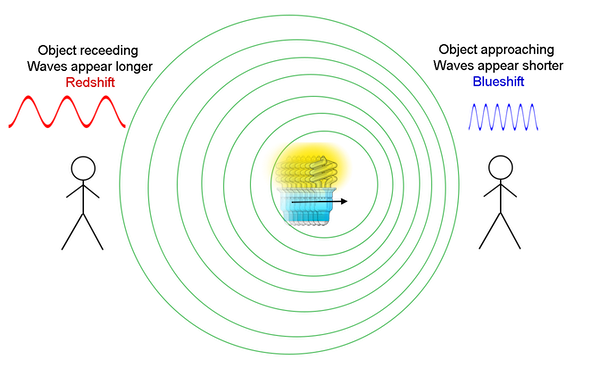Scientists Say: Doppler effect
The Doppler effect changes the apparent wavelength of waves produced by a moving source

You may have heard the Doppler effect in action when a siren passes you, and the pitch of the noise shifts from high to low.
Thomas Winz/Getty Images
Doppler effect (noun, “DOPP-ler ee-FEKT”)
The Doppler effect is a change in the apparent wavelength of light or sound waves. This change is caused by the source of those waves moving toward or away from an observer. If a wave source moves toward an observer, then that observer perceives shorter waves than the source actually emitted. If a wave source moves away from an observer, then that observer perceives longer waves than those actually emitted.
To picture why this happens, imagine that you are driving a motorboat in the ocean. Waves roll toward the shore at a constant rate. And if your boat sits idle on the water, waves will pass you at that constant rate. But if you drive your boat out to sea — toward the wave source — then waves will pass your boat at a higher frequency. In other words, the waves’ wavelength will seem shorter from your point of view. Now, imagine driving your boat back to shore. In this case, you are moving away from the source of the waves. Each wave passes your boat at a slower rate. That is, the waves’ wavelength seems longer from your perspective. No matter which way you drive your boat, the ocean waves themselves have not changed. Only your experience of them has. The same is true with the Doppler effect.
You may have heard the Doppler effect at work in the sound of a siren. As a siren approaches you, you perceive its sound waves as shorter. Shorter sound waves have a higher pitch. Then, when the siren passes you and gets farther away, its sound waves seem longer. Those longer sound waves have a lower frequency and pitch.

The Doppler effect plays an important role in astronomy. That’s because stars and other celestial objects give off light waves. When a celestial object moves toward Earth, its light waves appear bunched up. These shorter light waves look bluer. This phenomenon is called blueshift. When an object moves away from Earth, its light waves seem stretched out. Longer light waves look redder, so this effect is called redshift. Blueshift and redshift can expose slight wobbles in stars’ motions. Those wobbles help astronomers detect the gravitational pull of planets. The redshift of distant galaxies also helped reveal that the universe is expanding.
Some technology relies on the Doppler effect. To catch people who are speeding, police officers point radar devices at cars. Those machines send out radio waves, which bounce off moving vehicles. Because of the Doppler effect, the waves reflected by moving cars have a different wavelength than those sent out by the radar device. That difference shows how fast a car is moving. Meteorologists use similar tech to send radio waves into the atmosphere. Changes in the wavelengths of waves reflected back allow scientists to track water in the atmosphere. This helps them forecast the weather.
In a sentence
The Doppler effect helped one teen discover a planet with two suns, like Luke Skywalker’s home planet in Star Wars.
Check out the full list of Scientists Say.

Educators and Parents, Sign Up for The Cheat Sheet
Weekly updates to help you use Science News Explores in the learning environment
Thank you for signing up!
There was a problem signing you up.







